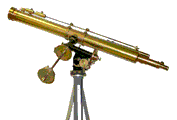Department of Physics and Astronomy: Publications and Other Research

M. Eugene Rudd Publications
Document Type
Article
Date of this Version
11-1994
Abstract
A theoretical model, which is free of adjustable or fitted parameters, for calculating electron impact ionization cross sections for atoms and molecules is presented. This model combines the binary-encounter theory with the dipole interaction of the Bethe theory for fast incident electrons. The ratios of the contributions from distant and close collisions and interference between the direct and exchange terms are determined by using the asymptotic behaviors predicted by the Bethe theory for ionization and for stopping cross sections. Our model prescribes procedures to calculate the singly differential cross section (energy distribution) for each subshell using the binding energy, average kinetic energy, and the differential dipole oscillator strengths for that subshell. Then the singly differential cross section is integrated over the ejected electron energy to obtain the total ionization cross section. The resulting total ionization cross section near the threshold is proportional to the excess energy of the projectile electron. We found that this model yields total ionization cross sections for a variety of atoms and molecules from threshold to several keV which are in good agreement (~ 10% or better on average) with known experimental results. The energy distributions also exhibit the expected shapes and magnitudes. We offer a simpler version of the model that can be used when differential oscillator strengths are not known. For the ionization of ions with an open shell configuration, we found that a minor modification of our theory greatly improves agreement with experiment.


Comments
Published in Physical Review A Volume 50, Number 5, November 1994. Copyright © American Physical Society; used by permission.